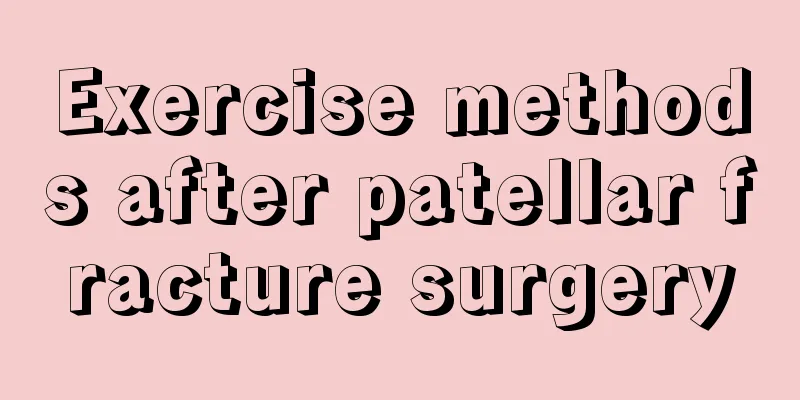What is the method of artificial respiration?

|
Artificial respiration is a relatively common first aid measure. When using artificial respiration to rescue patients, you must be able to master the correct method so that the effect can be better. Different artificial respiration methods should be adopted at different times to try to gain time for treatment. Below, I will introduce several effective and common methods of artificial respiration. 1. Mouth-to-mouth or (nose) blowing method: This method is simple to operate and easy to master, and the gas exchange volume is large, close to or equal to the amount of gas breathed by a normal person. It works well for both adults and children. How to do it: (1) The patient lies in supine position, with the chest and abdomen facing upward. (2) The rescuer stands to one side of the patient's head, takes a deep breath, and blows air into the patient's mouth (the two mouths must be tightly closed to prevent air leakage), causing the patient to inhale. To prevent air from escaping from the nostrils, you can pinch the nostrils with one hand, then take the rescuer's mouth away, release the pinched nostrils, and press the chest with one hand to help exhalation. Repeat this process 14 to 16 times per minute. If the patient has severe oral trauma or his teeth are clenched, you can blow air into his nostrils (the mouth must be blocked), which is mouth-to-nose blowing. The force with which the rescuer blows depends on the patient's specific condition. Generally speaking, it is most appropriate when the patient's chest bulges slightly after air is blown in. Between mouth and mouth, if there is gauze. Then put a piece of gauze stacked in two layers, or a thin handkerchief stacked in one layer, but be careful not to affect the air flow in and out. 2. Prone back pressure method: This method is widely used, but it is an older method in artificial respiration. Because the patient is in prone position, the tongue can fall slightly outward and will not block the airway. The rescuer does not have to deal with the tongue specifically, which saves time (it is not easy to pull out and fix the tongue in a very short time) and can perform artificial respiration early. The amount of gas exchanged is less than mouth-to-mouth breathing, but the rescue success rate is higher than the several artificial respiration methods mentioned below. At present, rescue work is underway for the victim of electric shock. This method is often used at the scene of drowning. However, this method is not suitable for pregnant women or people with fractures in the chest or back. How to do it: (1) The patient lies prone, with the chest and abdomen touching the ground. The abdomen can be slightly elevated. The head is tilted to one side. Both arms are stretched over the head, with one arm under the head and the other arm stretched outward to expand the chest cavity. (2) The rescuer faces the patient's head and kneels on the ground with his legs bent, on both sides of the patient's thighs. He places his hands flat on the patient's back, below the shoulder blades (approximately at the seventh pair of ribs) and on both sides of the spine, with the thumbs close to the spine and the other four fingers slightly open and slightly bent. (3) The rescuer leans forward and slowly applies pressure downward, pushing slightly forward. When the rescuer's shoulders are in a straight line with the patient's shoulders, stop exerting force. In this downward and forward pushing process, the air in the lungs is pressed out, forming exhalation. Then slowly relax and turn around to allow outside air to enter the lungs, forming an inhalation. (4) Repeat the above movements rhythmically, 14 to 16 times per minute. Artificial respiration can also be performed by the supine chest compression method. The biggest advantage of this method is that it is very convenient to observe the patient's complexion, and when performing supine chest compression, the amount of gas exchange will be close to the normal exhalation volume, which can have a better effect on the treatment of the injured. However, during the treatment process, the injured person's tongue may fall back, affecting the air entry. |
<<: Can vinegar effectively remove dandruff?
>>: The dangers of plucking nose hair
Recommend
What is the best way to treat myocardial ischemia
The treatment of myocardial ischemia must not be ...
What are the wonderful uses of Fengyoujing in the life of couples?
In order to enhance sexual pleasure during sex, c...
Can you drink mineral water that has been exposed to the sun?
I believe everyone has drunk mineral water, and i...
I took the emergency contraceptive pill and had chest pain
In the life of both sexes, contraception is the m...
Things to note when taking a dandelion bath
Dandelion is not only an ornamental plant, but al...
Dietary considerations for gastric cancer patients after surgery
In life, I believe everyone has a certain underst...
What are the symptoms of cholecystitis?
Cholecystitis can be divided into acute and chron...
How is breast cancer diagnosed
The diagnosis of breast cancer must be based on h...
Pee smells bad
Generally, the smell will be stronger when defeca...
What should I do if my black and white clothes get stained?
People usually wear black and white clothes. If w...
How to relieve neck pain
The neck is the part that connects the head to th...
What causes droopy eyes
For everyone, age is a butcher's knife. When ...
What are the late symptoms of pituitary tumors
Pituitary tumor is one of the main factors causin...
Have you made any mistakes in treating constipation with diet?
Nowadays, constipation is no longer exclusive to ...
Can the small black spots poked into the flesh by a pencil be removed?
I believe many people have had the experience of ...









